The contents of this website are not intended to be medical advice.
Please see your healthcare
professional
with any specific questions about your condition and / or treatment.
Keeping active with atopic dermatitis


The contents of this website are not intended to be medical advice.
Please see your healthcare
professional
with any specific questions about your condition and / or treatment.


It is well publicised that exercise is good for health, improving our moods, and keeping us trim! The benefits of exercise impact every other aspect of our lives and, importantly for those with atopic dermatitis, it reduces stress, the most commonly reported trigger of flare-ups.
But as well as the health benefits, exercise in any form helps us “feel good” in many ways. For example, more oxygen is pumped to the brain when we exercise and it also stimulates the release of feel-good hormones, helping to suppress the stress inducing ones.
This depends on your age, but the NHS recommends that we should ALL be physically active every day.
A good way to test if you are as fit as you should be, is to take a “sit stand” challenge. Put simply, you have to time how long it takes you to get up from a chair and sit back down again, 10 times over. It is an easy fitness assessment you can do at home and is a measure of lower body strength. There are guidelines as to what you should be able to do, depending on your age and gender.
This test is for adults aged 20 to 85. Place your chair against a wall and have another person with you. When participating in any exercise or physical test, you agree that you do so voluntarily and assume all risk of injury.
Only start the test if you are feeling well and have no existing conditions that could be affected. You should speak to your doctor before starting a new exercise regime.
How to work out your result:
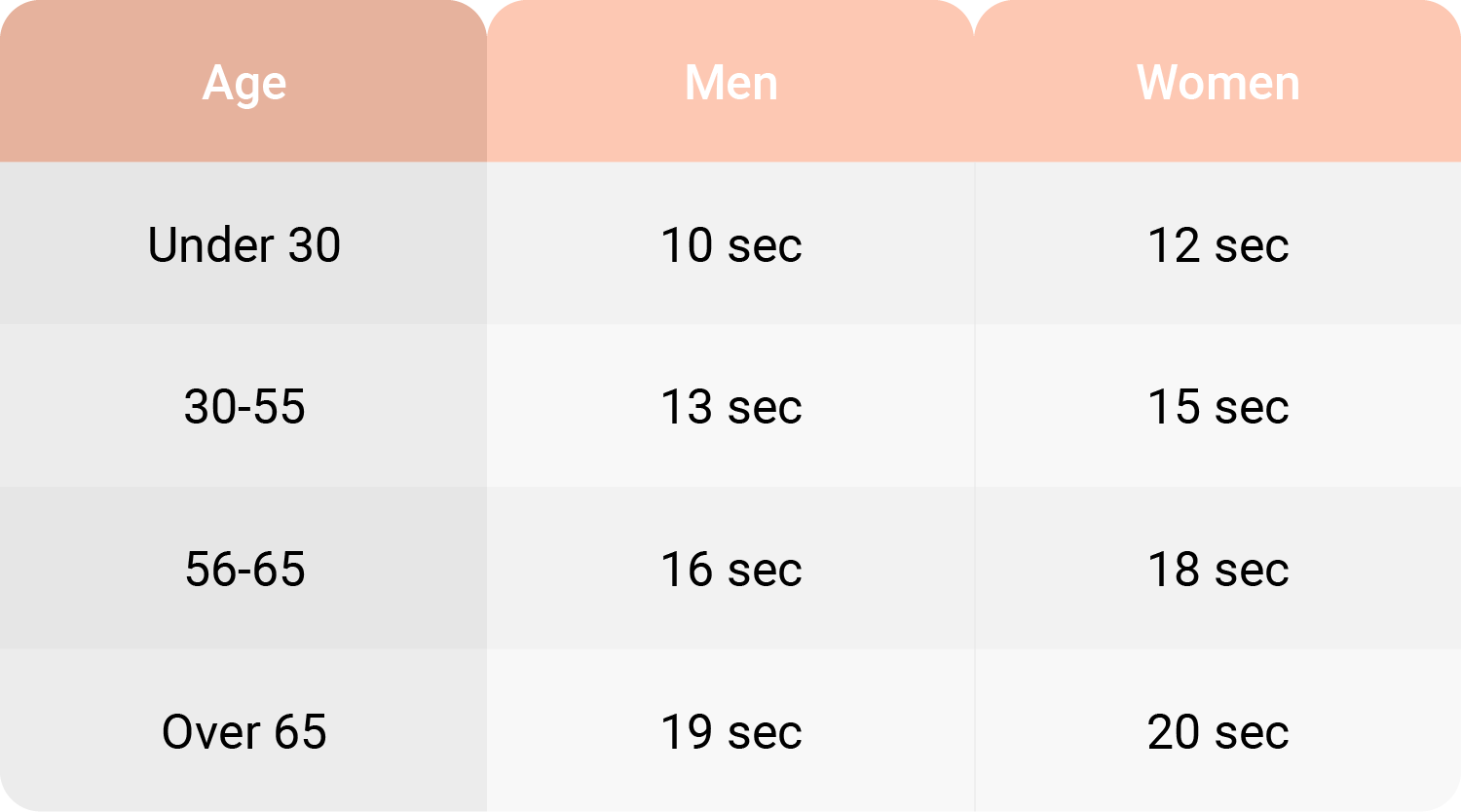
Use this table to see how you compare to the average time for your age and sex. As a general rule, the faster the better.
Why not focus on your fitness and see if you can improve your sit stand result?
Exercise is a very personal thing. We all enjoy different types of exercise and because we are all unique, it will have a different effect on us both physically and mentally. Some of us enjoy the gym, others like the great outdoors. Some are suited to cardiovascular workouts; others respond better to strength exercises.
Here are a few more ideas to help you determine which exercise works best for you.
Move more. It’s important to remember to move more. Try taking the stairs, ditch the car and try to do more steps. You could also try to exercise little and often. A single 15-minute walk can give you an energy boost and walking regularly is a really good way to move.
Moderate-intensity activity. Moderate activity will raise your heart rate, and make you breathe faster and feel warmer. One way to tell if you’re working at a moderate-intensity level is if you can still talk, moderate intensity activities include brisk walking, riding a bike on level ground, pushing a lawn mower or water aerobics to name a few.
Vigorous-intensity activity. Vigorous-intensity activity makes you breathe hard and fast. You won’t be able to say more than a few words without pausing for breath. Activities include running, swimming fast, riding a bike fast.
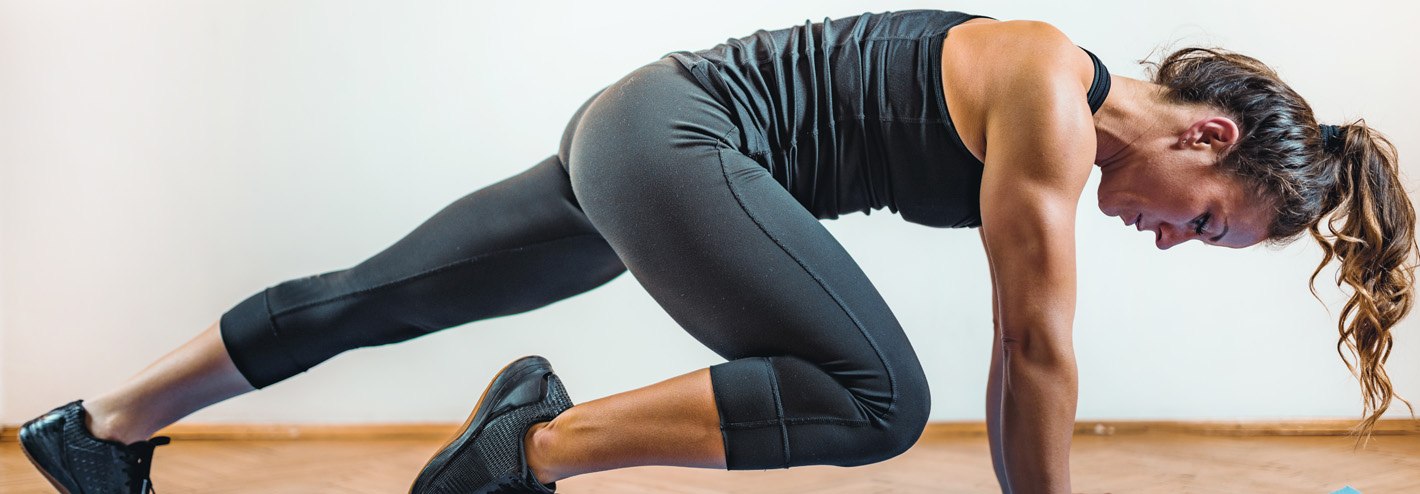
Muscle strengthening. There are lots of ways to train your muscles. Doing exercises that use your own body weight are a good start and if you want to train harder you can add weights in increments. Better muscular strength can improve your muscle mass, and also helps in burning fat. Bonus!
Flexibility. Exercises like yoga, Pilates and tai chi not only improve your muscle strength but improve your flexibility. Improving your flexibility can have a massive impact on your overall wellbeing, at any age. It can help increase your muscular performance, reduce tension, stress and chance of injury.
Why not have a look at some of the workout and exercise guides to find a workout to suit you?
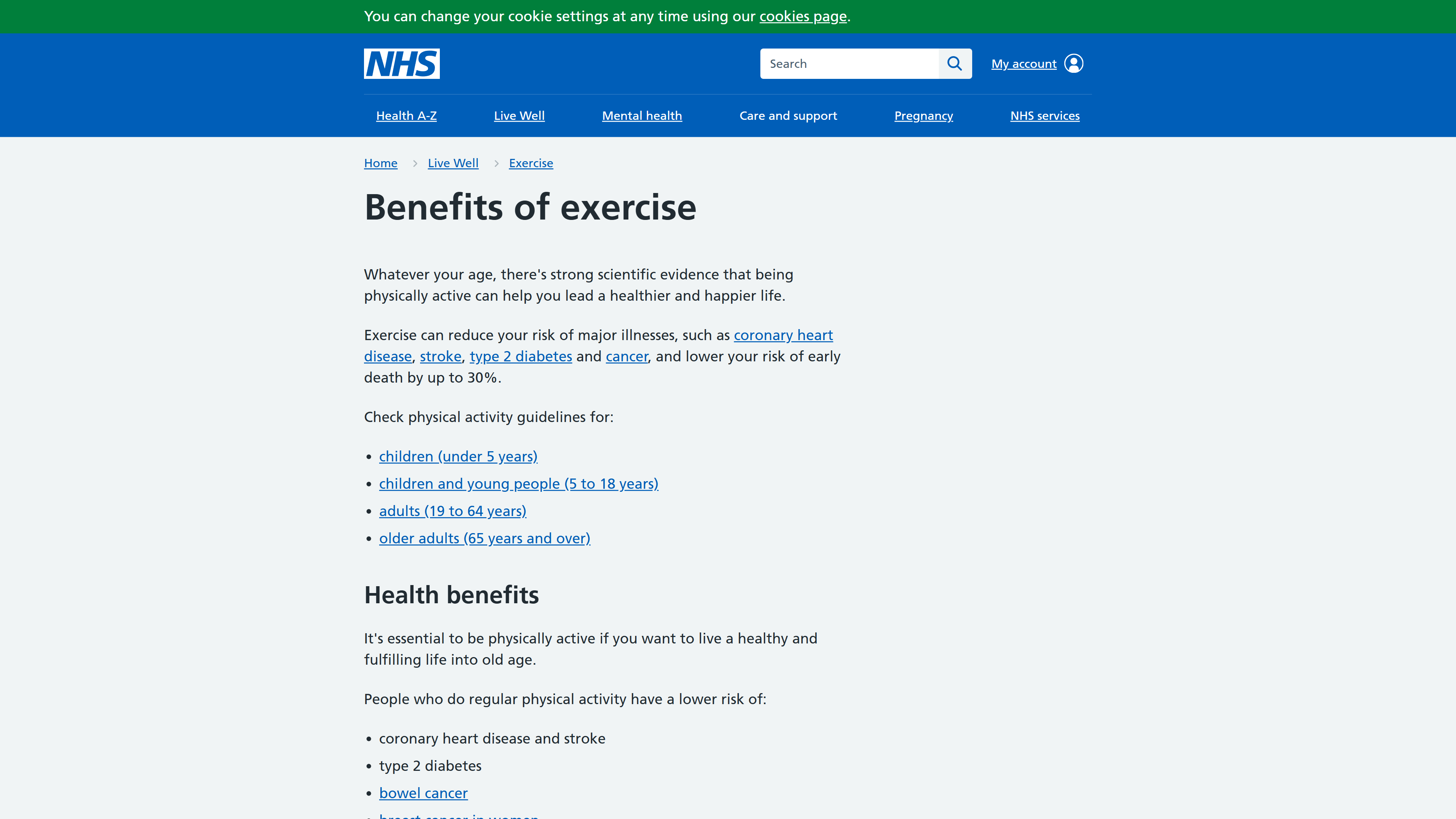 Bodyweight workout
Bodyweight workout
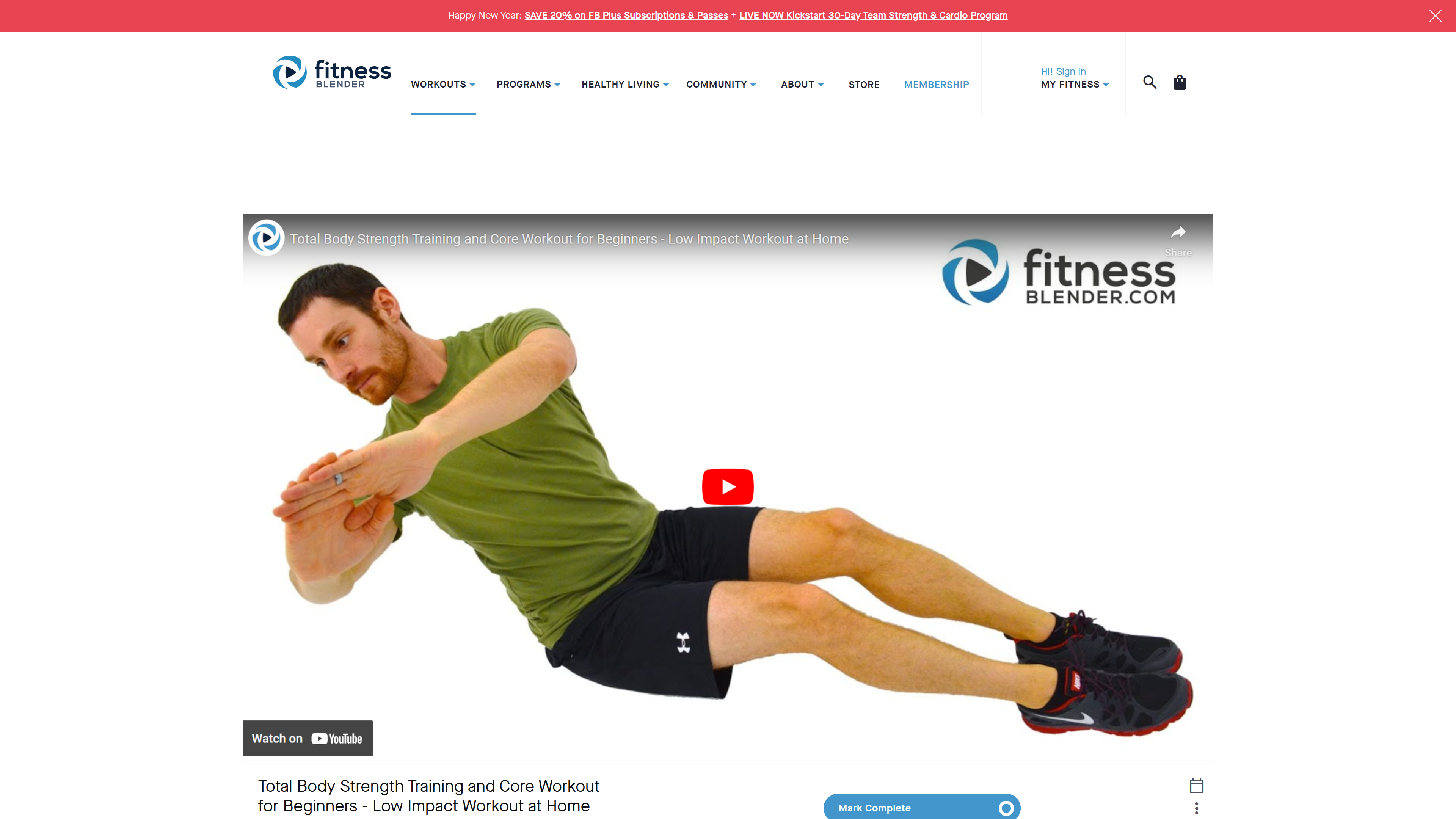 More advanced bodyweight workout
More advanced bodyweight workout
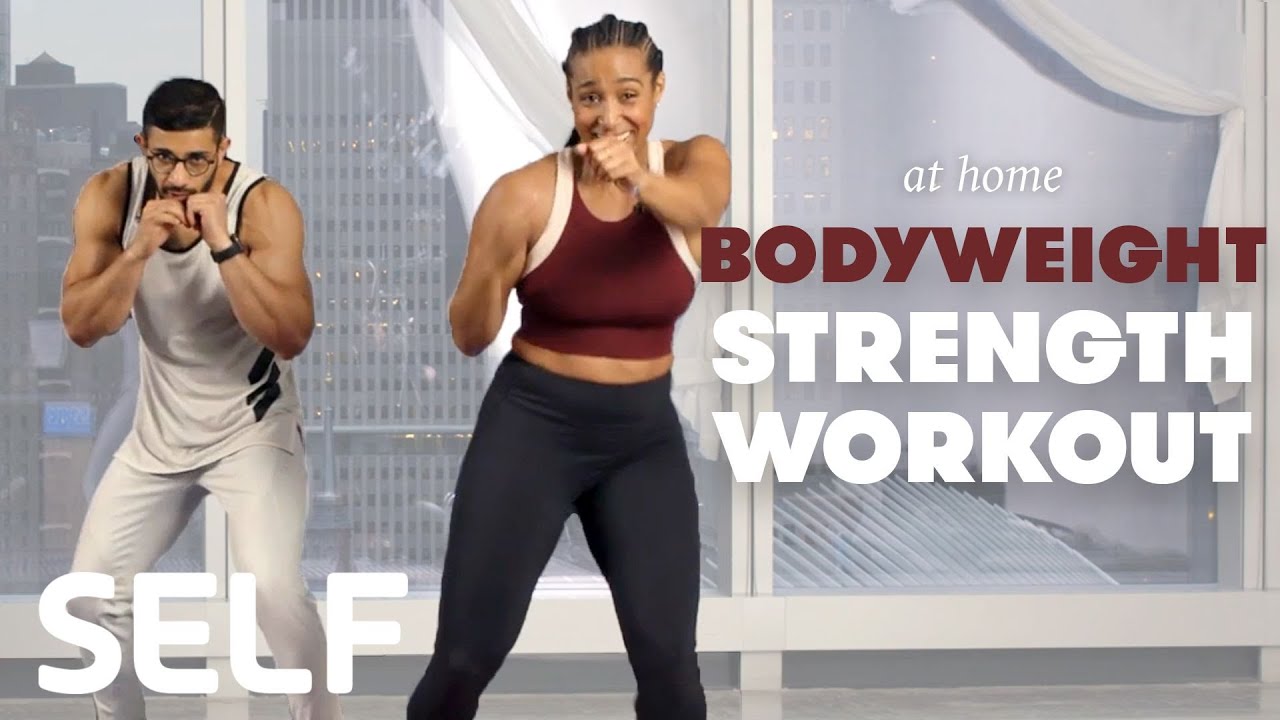 HIIT workout for beginners
HIIT workout for beginners
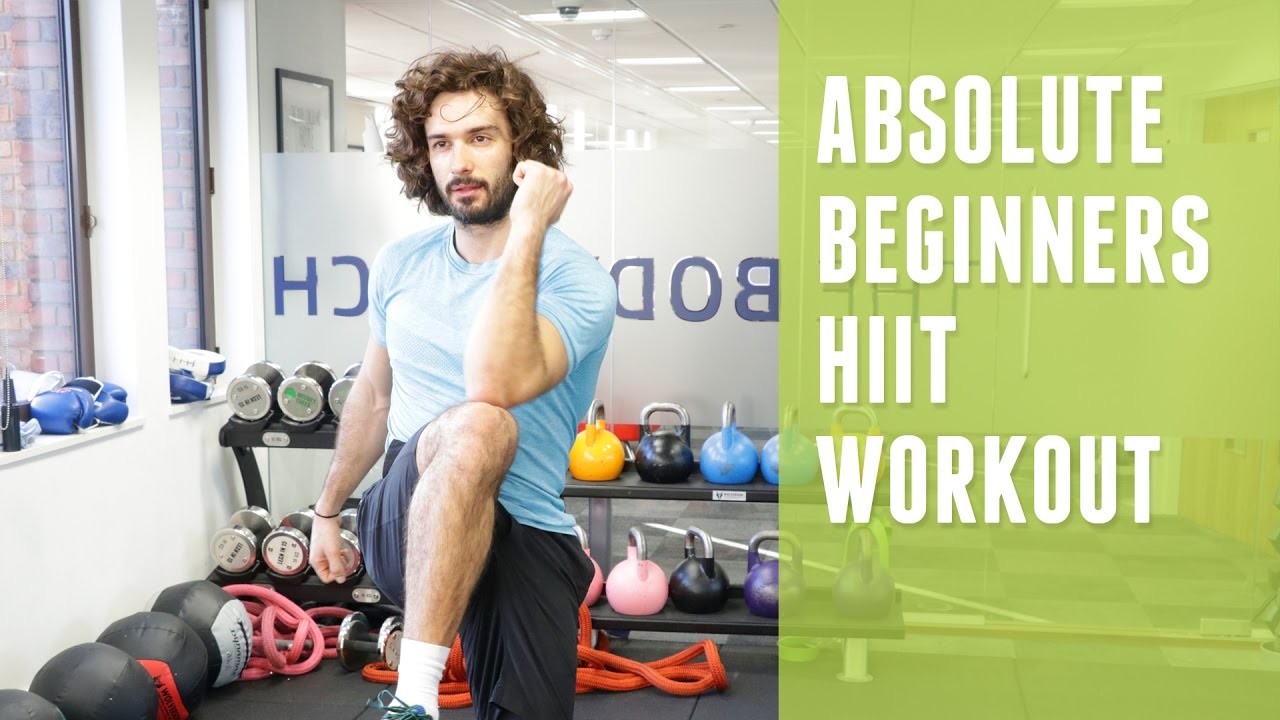 More advanced HIIT workout
More advanced HIIT workout
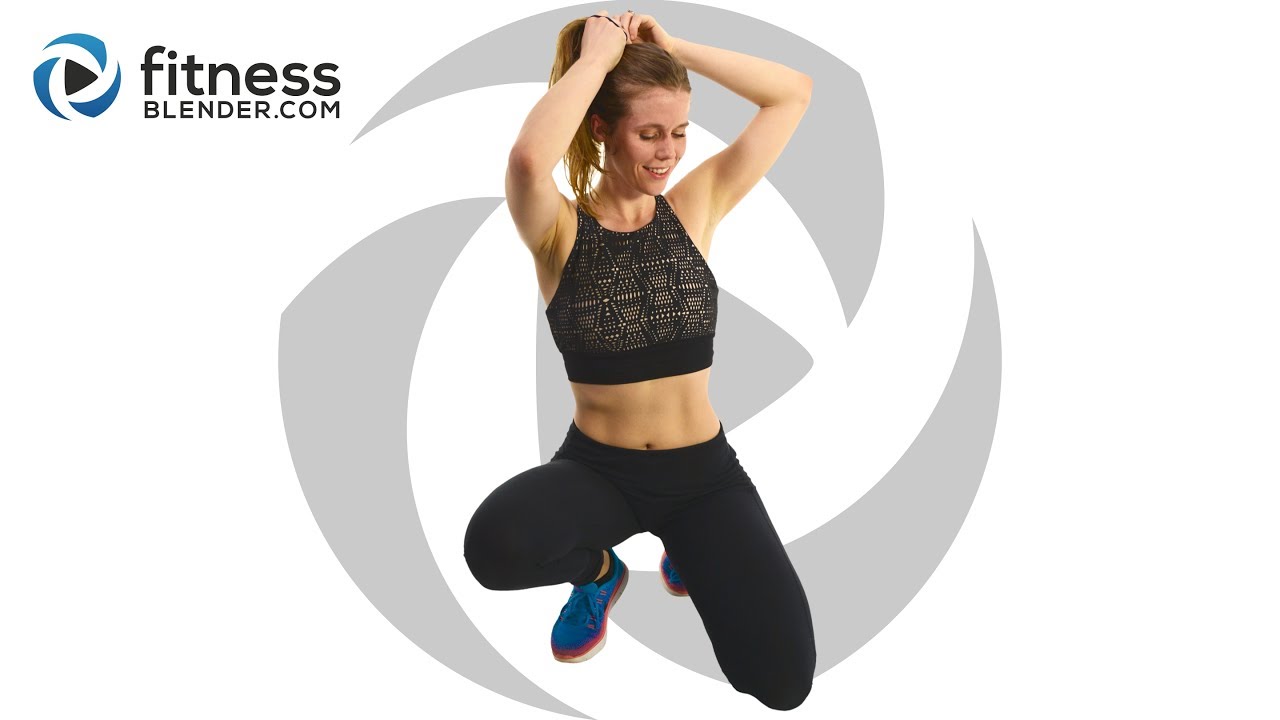 Stretch workout
Stretch workout
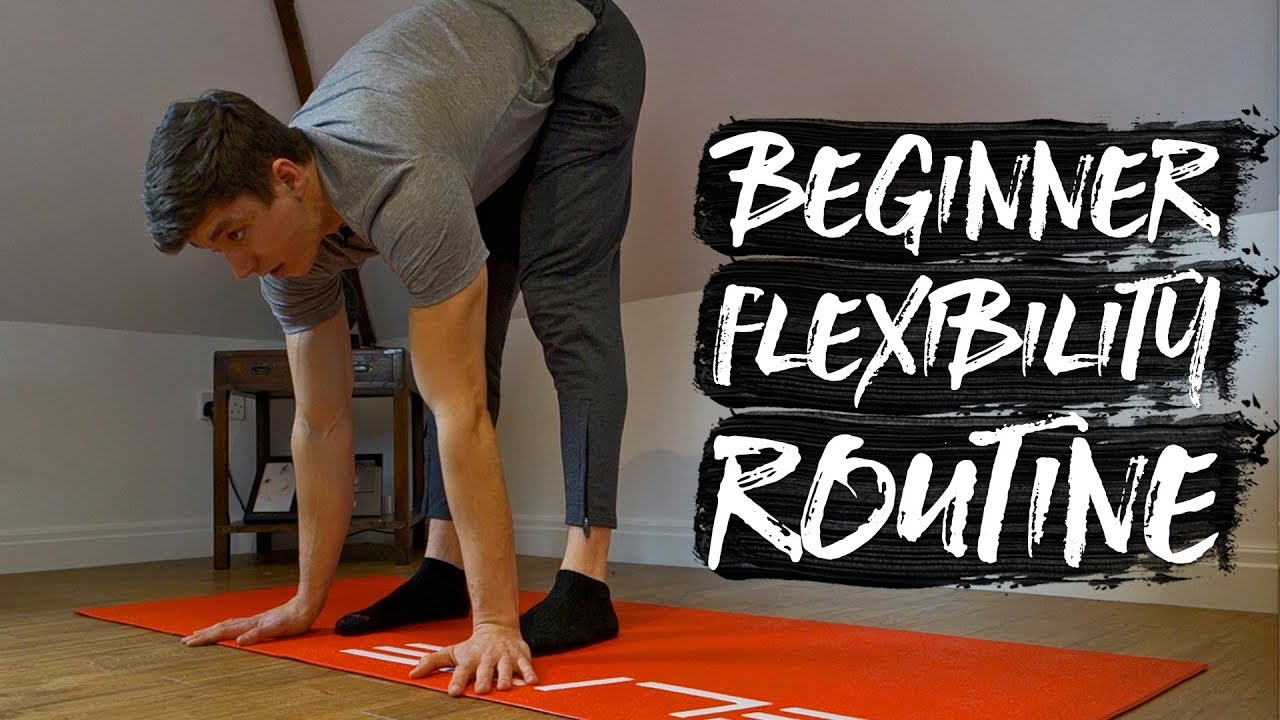 Yoga for beginners
Yoga for beginners
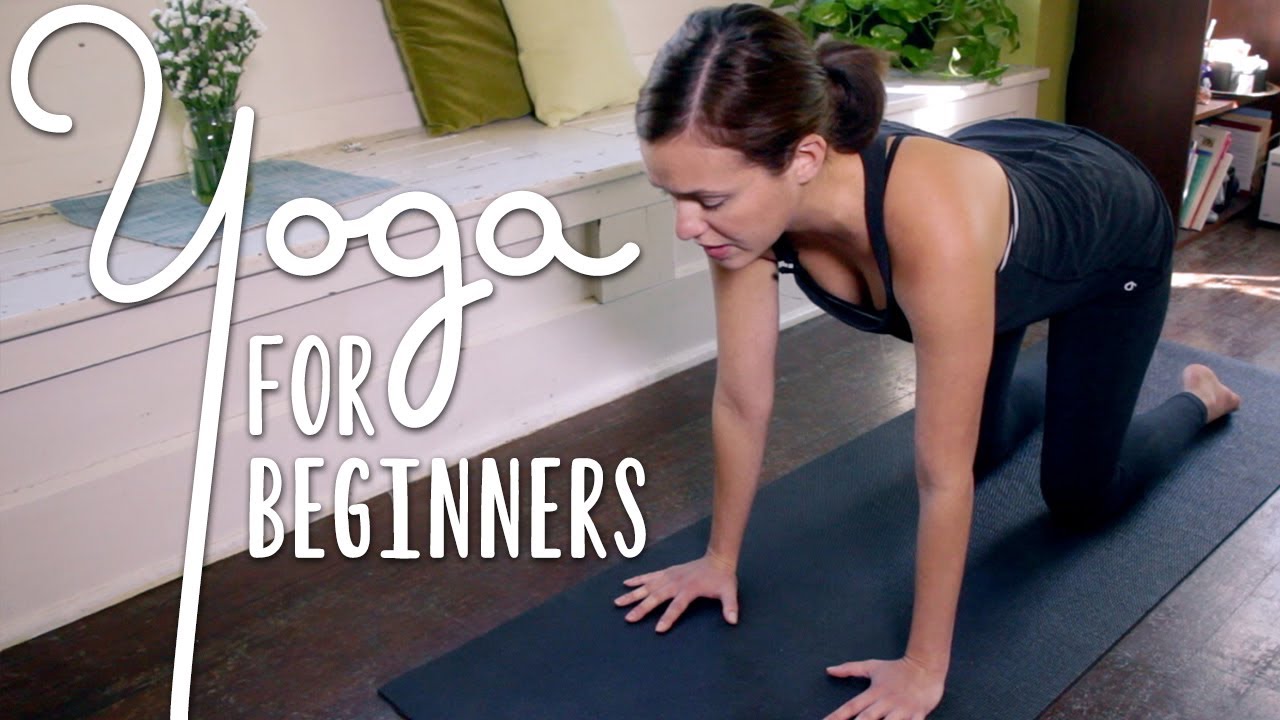 Pilates for beginners
Pilates for beginners
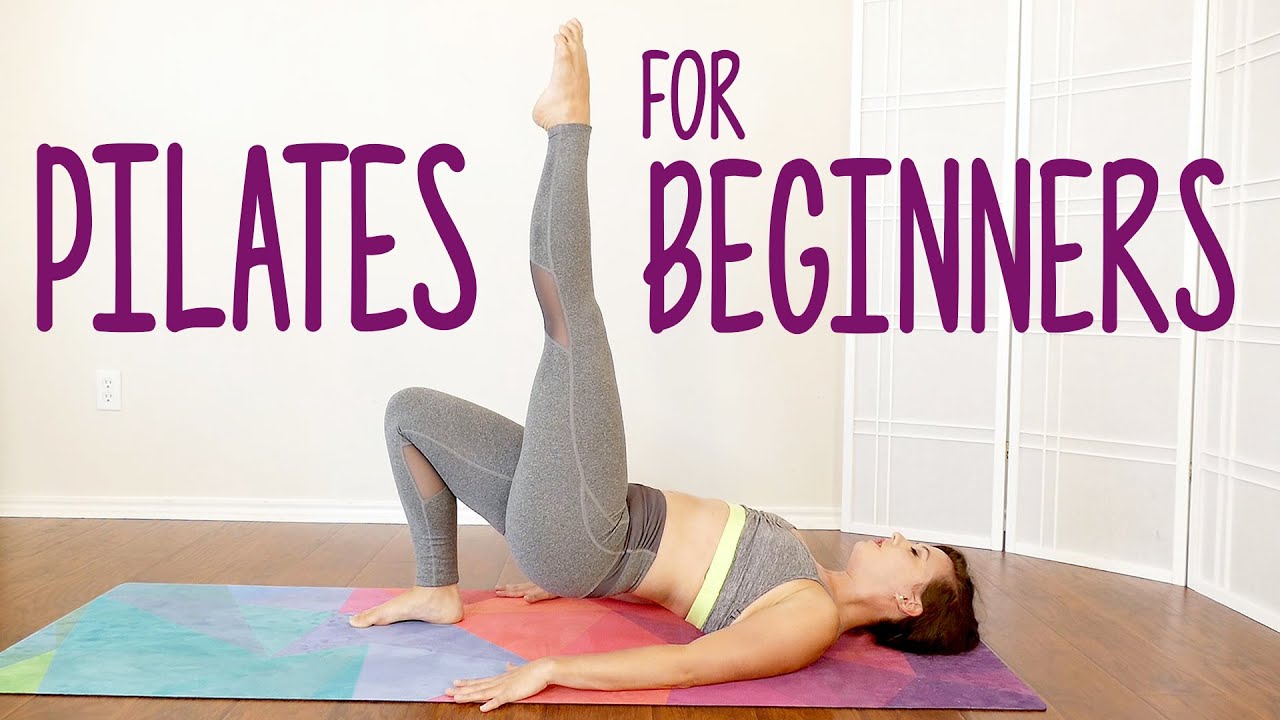
Whatever type of exercise you choose, always begin your workout session with a gradual warm-up and take the time to cool down afterward. Warming up and cooling down will help prevent sore or pulled muscles. Exercise should be somewhat challenging, but never a struggle. If at any point during exercise you feel sick or in pain, stop right away. Make certain the exercise space is well-lit, not slippery, and free of trip hazards.
Keep yourself well hydrated. It is important to drink plenty of water before, during and after exercise. Be especially careful to avoid energy drinks, fizzy drinks or high sugar content sports drinks.
Having atopic dermatitis brings some additional challenges when exercising, with time needed to look after the skin both before and after training. Though sweating is part and parcel of exercising, it can trigger or exacerbate flare-ups, due to its acidic and salty quality, posing another challenge. However, the benefits of regular exercise to overall health and to stress reduction (a major cause of flare-ups) make it worthwhile persevering with exercise to find something you enjoy and that works for you.
Here are some ideas to incorporate your atopic dermatitis into your exercise regime:
Protect the skin: Prior to exercising, it’s helpful to apply a light, non-greasy moisturiser to protect the skin. During exercise, wear loose, breathable, moisture-wicking clothing to reduce irritation from sweat and friction. After exercising, a gentle shower with a fragrance-free cleanser, followed by moisturising, helps maintain skin health.
Stay hydrated: Due to a weakened skin barrier, those with atopic dermatitis are at increased risk of dehydration, so be sure to have a water bottle with you and to drink little and often whilst exercising.
Duration/frequency of workouts: Opting for shorter, more frequent workouts rather than long, intense sessions can help minimise sweat-related irritation of the skin.
Post-exercise care: Shower as soon after exercise as you can, using a mild hypoallergenic soap, to remove sweat and other potential irritants from the skin. Use the soak and seal technique, by applying emollients within 3 minutes of finishing your shower, to lock water into the skin.
Personal triggers: Pay attention to personal triggers, such as certain activities or fabrics that may cause your atopic dermatitis to flare up. Over time, you will develop a feeling for what form(s) of exercise suits you best.
Many people enjoy swimming as a way to stay fit and healthy. For those with atopic dermatitis, it can be a good choice in terms of exercise, as it limits how hot and sweaty one becomes whilst exercising, thus limiting the negative side-effects of sweat on the skin barrier.
There can be challenges associated with swimming though, from the drying out of skin afterwards, to the potential irritation of the skin by chlorine. Read on for our tips on how to adapt your swimming practice to make it an enjoyable and integrated part of your life.
If your skin is particularly inflamed or cracked due to a flare-up, it’s best to avoid swimming until your skin has healed, to avoid worsening the irritation.
Before swimming, apply a thick emollient to create a protective barrier between your skin and the water. This helps prevent chlorine, salt, and other irritants from penetrating the skin. Ideally this should be applied after showering, but before entering the water. If swimming outdoors, remember to apply a waterproof sunscreen in addition to the emollient.
As soon as you get out of the pool, rinse your skin thoroughly with fresh, lukewarm water to wash off chlorine, salt, or any other chemicals, to prevent further irritation. Try to shower as soon as you finish swimming, as chlorinated pools emit chlorine fumes that can still act as an irritant. The exception to this is if the showers at the swimming pool also use chlorinated water, in which case it may be worth going home to shower there, if you live close by.
After rinsing off, gently pat your skin dry with a soft towel and immediately apply a thick, fragrance-free emollient. Reapplying moisturiser right after swimming helps lock in moisture and restore the skin’s protective barrier.
All swimming pools need to maintain hygiene, and usually do so through the addition of chlorine, alongside other chemicals. For some people with atopic dermatitis, these chemicals, can act as an irritant to their skin. It’s worth noting that different pools may use some different chemicals, and so trigger individuals differently.
Chlorine and other chemicals are added to pools on a regular schedule. If you do find chlorine irritating, you could ask staff at the pool to share their schedule with you, and so choose to swim at times when chlorine levels will be lower.
Another option if your skin reacts negatively to chlorine, is to look for pools that use alternative methods for maintaining hygiene, such as ozone or ultraviolet systems, which can be gentler on the skin.
Don’t stay in the water too long, as prolonged exposure to water may cause your skin to dry out. Try to limit swimming sessions to around 30 minutes. If you do wish to swim for a longer period, consider taking breaks every 20–30 minutes to reapply moisturiser.
When choosing swim wear, you could consider a wet suit or a swim shirt which can provide an additional layer between your skin and the water, potentially reducing irritation. These can also be a great choice for anyone who may be self-conscious about their atopic dermatitis.
If you wear goggles, shop around for a pair that works for you, as some types can cause irritation due to their fit or the materials used in their manufacture.
People with atopic dermatitis may face different challenges when they exercise, for example, you may be embarrassed to bare your arms or legs at the swimming pool or gym. If you feel too self-conscious about your skin to join a class or work out in a gym, that’s understandable, but you don’t have to go it alone. Find a friend, family member, or colleague you feel comfortable around or recruit someone from your support group to work out with, even if it is just a morning walk or weekend round of golf.
Exercising with other people can help you stay motivated and more likely to stick with your fitness routine since you’ll be accountable to someone else if you don’t. Exercising with a friend is more fun too.
If you prefer absolute privacy when you work out, there are plenty of ways to exercise without leaving your house. You do not need expensive equipment either. A set of resistance bands and a yoga mat can be enough to get you started. Plus, there are numerous online fitness classes you can stream or download, many of which let you exercise with a group in real time — the best of both worlds if you are self-conscious but love to socialise.
Exercise can help your atopic dermatitis. But if you exercise too hard, you can overdo it and expose your body to stress, which can trigger flares.
The bottom line is to find the “Goldilocks Principle” which is the sweet spot of not too much, not too little and just right.
If you have a medical condition or injury that might restrict your exercise, it is best to talk to your healthcare professional before starting any new regime.